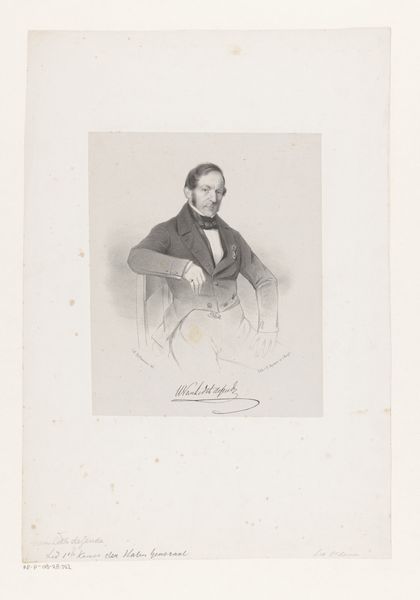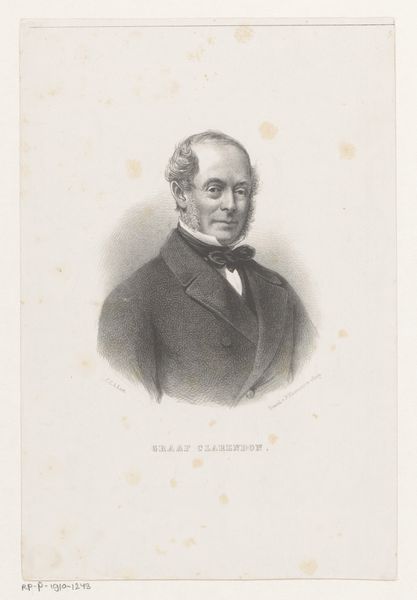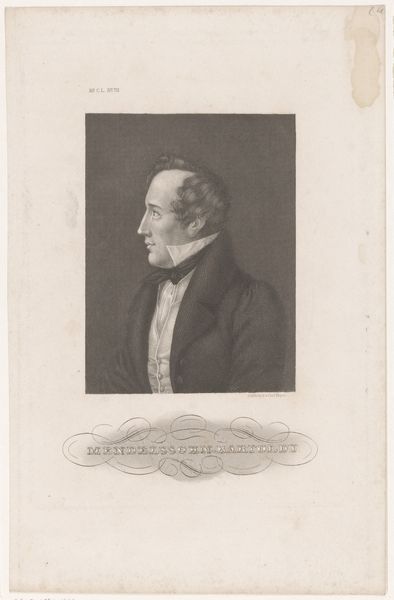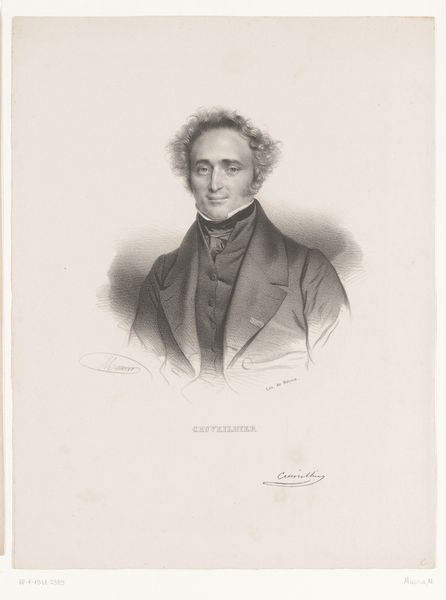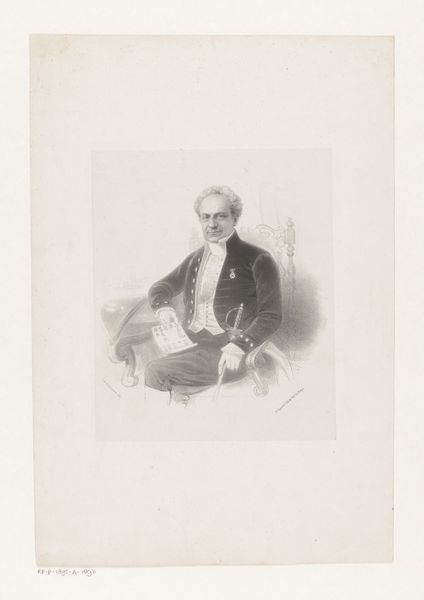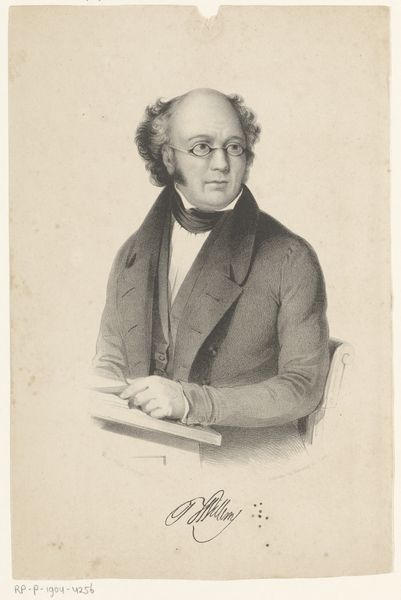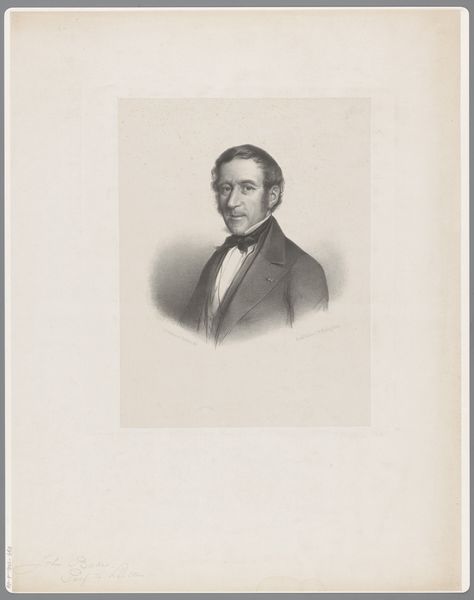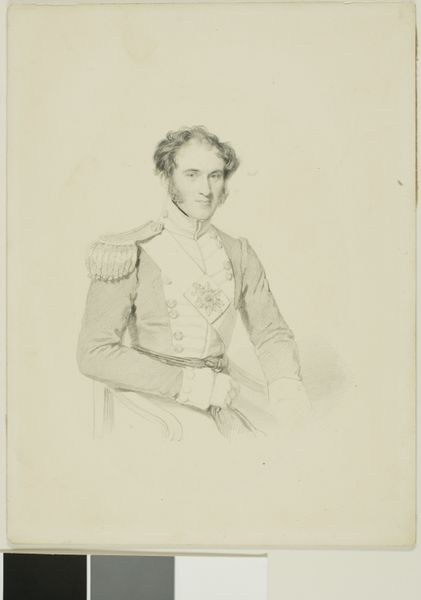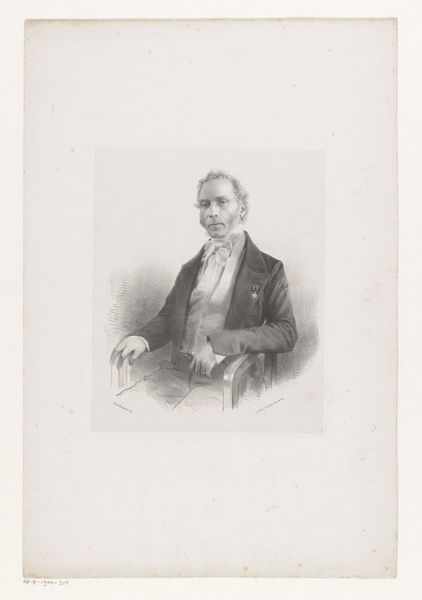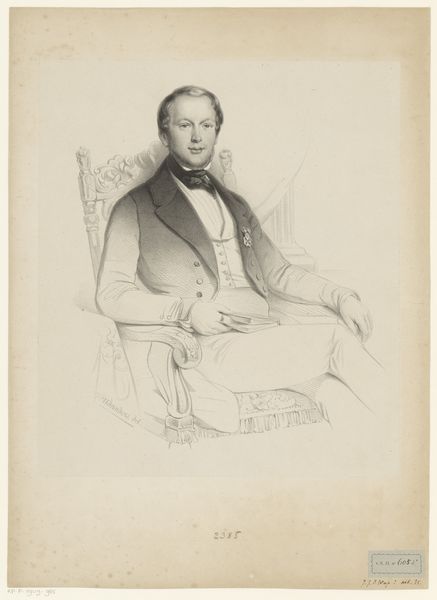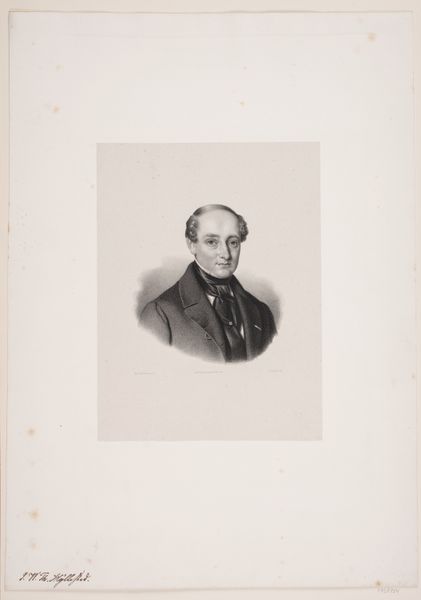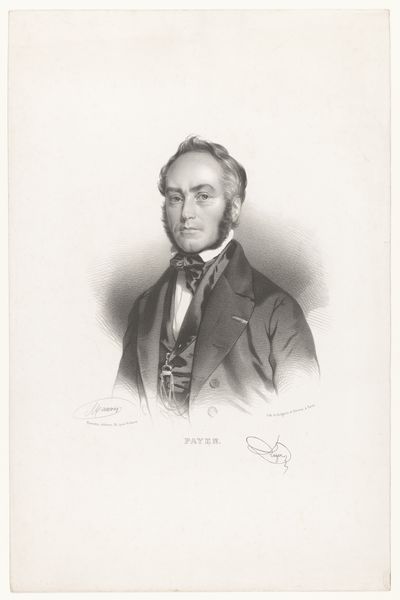
drawing, pencil
#
portrait
#
drawing
#
caricature
#
pencil drawing
#
pencil
#
portrait drawing
#
academic-art
#
realism
Dimensions: height 395 mm, width 330 mm
Copyright: Rijks Museum: Open Domain
Editor: Here we have Franciscus Bernardus Waanders’ "Portret van Jan Jacob Rochussen," created between 1844 and 1845 using pencil. The detail is incredible! It almost feels photographic in its realism, but the soft pencil strokes add a certain warmth. What catches your eye in this portrait? Curator: Well, focusing on materiality, notice the labor embedded within those “soft pencil strokes.” Waanders uses graphite – essentially processed mineral – to represent Rochussen, a figure undoubtedly linked to Dutch commerce and colonial administration at that time. Consider the inherent link between material resources, political power, and artistic representation happening here. What’s being bought and sold – or *who* is being bought and sold – to enable the creation of the image itself, and, indeed, Rochussen’s position in society? Editor: I hadn't thought of it that way! So, the pencil itself connects to larger economic structures. Does the way he's posed or what he's wearing play into this reading? Curator: Absolutely. Look closely. The precision in rendering his suit, his medals - each detail speaks to the economic status and authority derived from the social context. And observe how his physical presence and posture contribute towards making a political statement; a sort of power play captured via raw material. The very *act* of commissioning such a work solidifies the wealth invested in this one person’s persona and standing. Editor: It’s interesting to think of art as such an intricate display of wealth and labor. The pencil is so unassuming, yet it represents a whole world of economic activity. I guess portraits like this tell more than just a person's likeness. Curator: Precisely. It shifts our gaze to the underlying social and economic framework in which both the artist and sitter existed. It compels one to understand labor dynamics inherent behind a rather commonplace drawing made from such common resources.
Comments
No comments
Be the first to comment and join the conversation on the ultimate creative platform.
